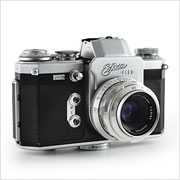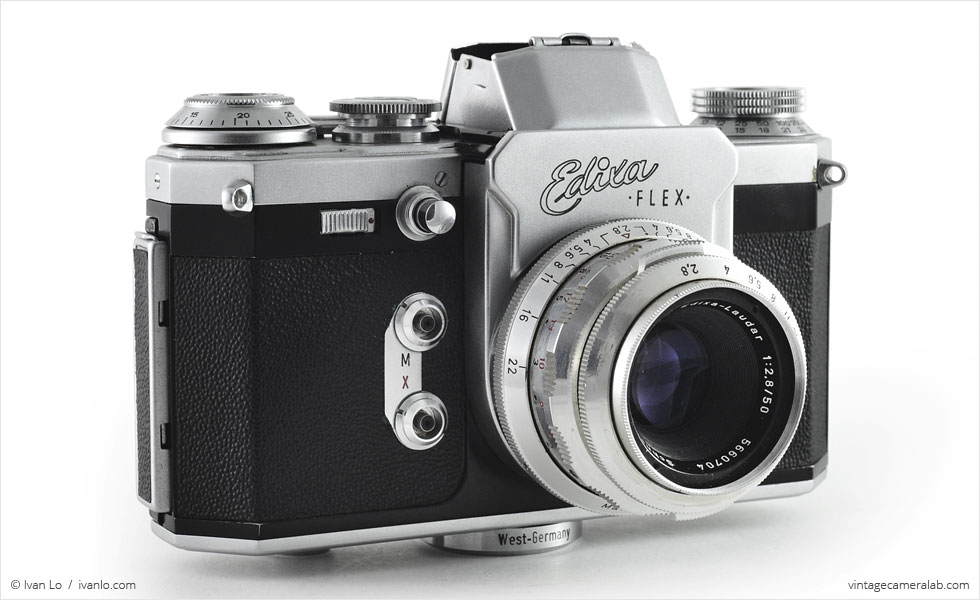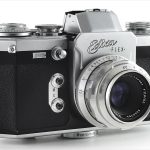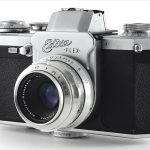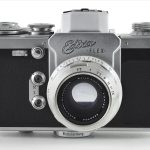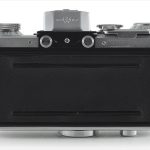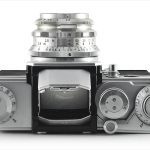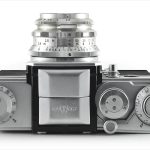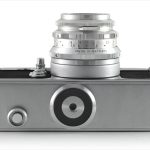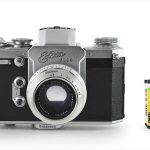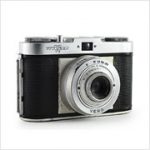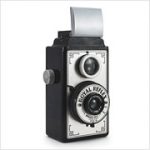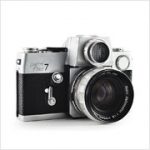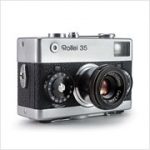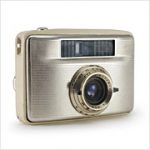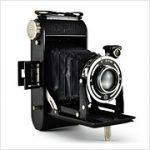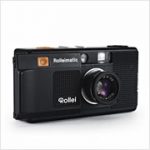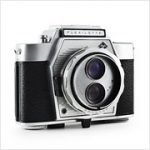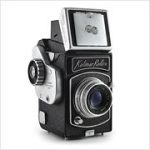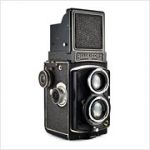Wirgin Edixa Flex Specifications
| Manufacturer: | Wirgin |
| Origin: | West Germany |
| (modern day Germany) | |
| Made in: | Wiesbaden, West Germany |
| (modern day Germany) | |
| Introduced: | 1958 |
| Type: | Single Lens Reflex |
| Lens Mount: | M42 Screw Mount |
| Format: | 135 Film |
| Dimensions: | 14.5 x 8.4 x 8.2 cm |
| 14.5 x 10 x 8.2 cm (viewfinder open) |
Wirgin Edixa Flex Overview
The Wirgin Edixa Flex is a 35mm single lens reflex camera designed by Heinz Waaske (who eventually went on to create the ground-breaking Rollei 35) and introduced in 1958 by the German manufacturer Wirgin. This camera is essentially a slightly simplified clone of the already established Wirgin Edixa Reflex with fewer shutter speed options and is one of many Wirgin cameras to utilize the Edixa name.
Like the Edixa Reflex that came before, the Edixa Flex is a modular camera and is capable of accepting different viewfinders and lenses. This example is fitted with a waist-level finder much like those found on TLRs as well as an Edixa-Laudar 50mm f/2.8 lens made by the world-renowned German optics manufacturer Schneider-Kreuznach. The shutter button (threaded on the outside for a Wirgin cable release) and shutter lock switch (which can be engaged to prevent uninentional exposures) can be found on the front of the camera adjacent to the lens at 10 o’clock while a pair of flash synchronization sockets are located at nine. The film advance lever and frame counter are found on the user’s right-hand side of the top plate. Next up is the shutter speed selector ring with options ranging from Bulb (the shutter stays open for as long as the shutter button is depressed), 1/25, 1/50, 1/100, 1/250, 1/500, and 1/1000 of a second. On the other side of the viewfinder is a film rewind knob with a film speed indicator at its base.
The viewfinder locking and release latch—two identical silver discs—can be found on the back of the camera near the top. To swap out the finder, simply pull the two buttons apart from one another. As this example has a waist-level finder, there is a tiny screw between the buttons which open the viewfinder when pushed. To unlock the film door, simply lift the tab near the top on the user’s right-hand side of the camera. A standard quarter inch tripod socket can be found on the bottom plate next to the film rewind release button.
I’m a great admirer of Heinz Waaske’s work so getting adding one of his beautiful 35mm SLRs to my collection was an absolute no-brainer for me. There’s quite a lot to appreciate on this particular Edixa Flex but my personal favorite by far is its exquisitely designed waist-level finder. The way the viewfinder doors pop open is immensely satisfying and the same is true of how the magnifier swings into place when the tiny tab on its left side is pushed. My example is, as far as I can tell, in perfect mechanical condition and is also in very good cosmetic condition with only few odd scuffs here and there.
Find your very own Wirgin Edixa Flex on eBay.
McKeown, James M. and Joan C. McKeown’s Price Guide to Antique and Classic Cameras, 2001-2002. (Grantsburg, WI, USA: Centennial Photo Service, 2001), p 687, 691.
“Heinz Waaske,” Wikipedia, https://en.wikipedia.org/wiki/Heinz_Waaske
